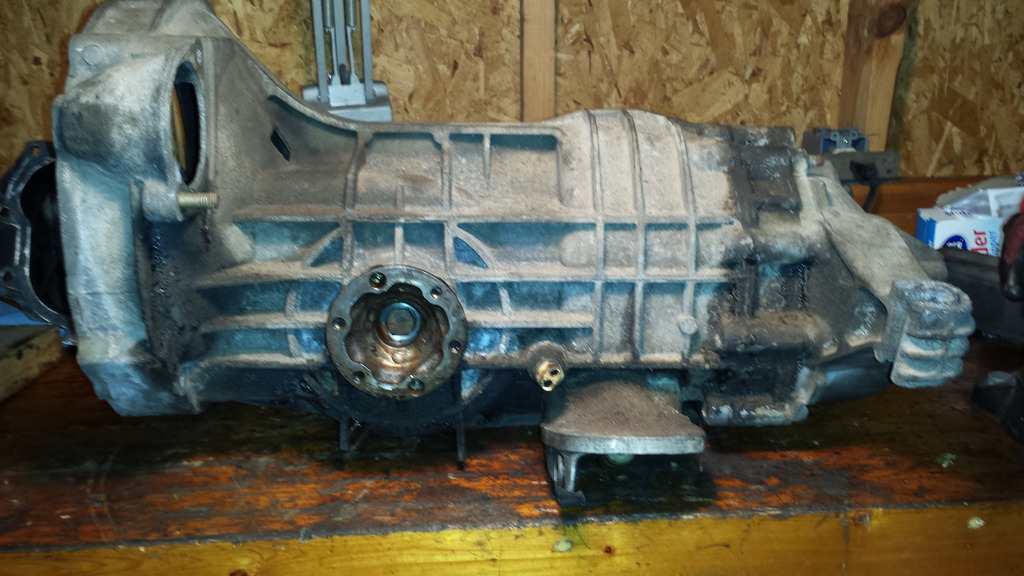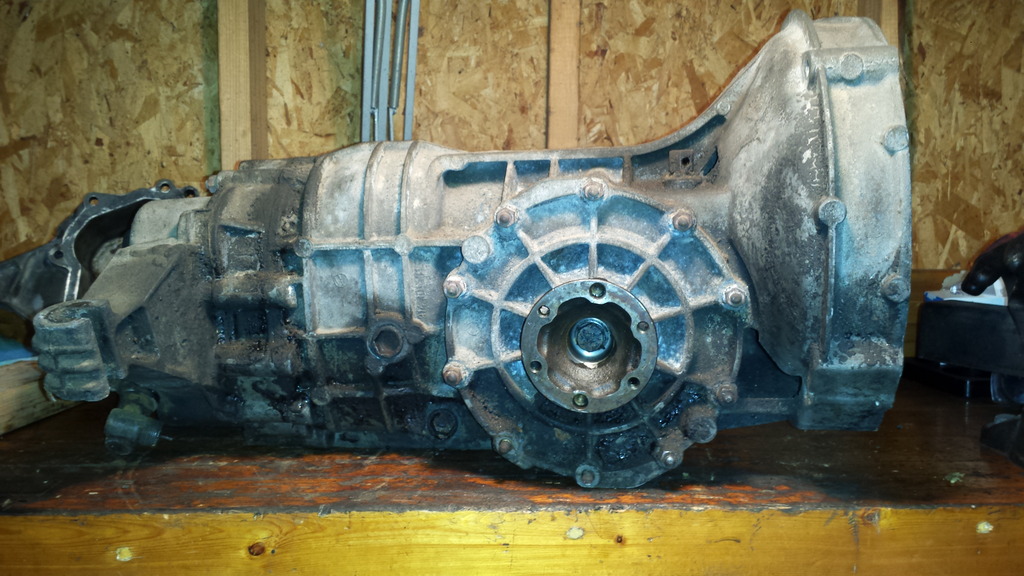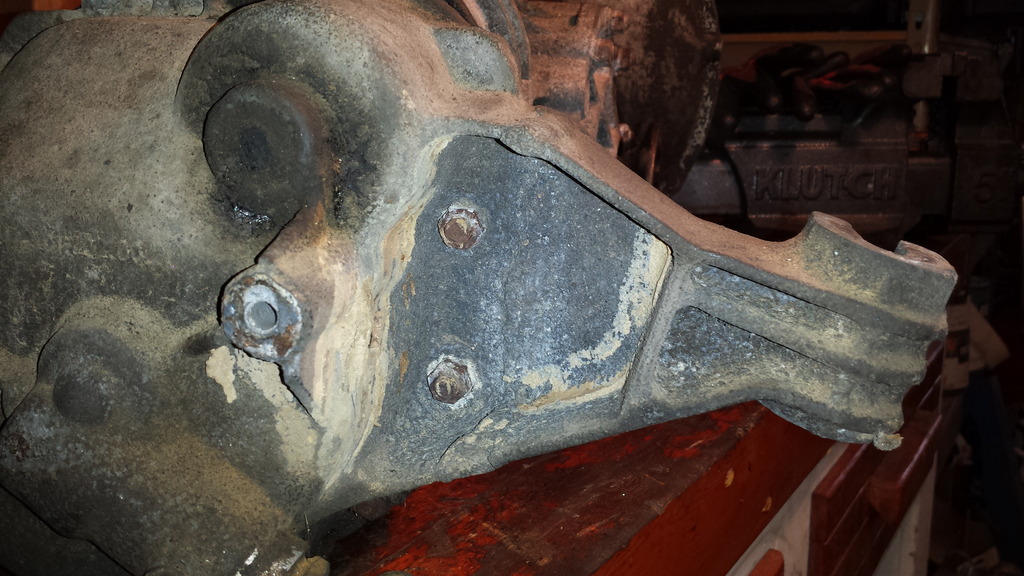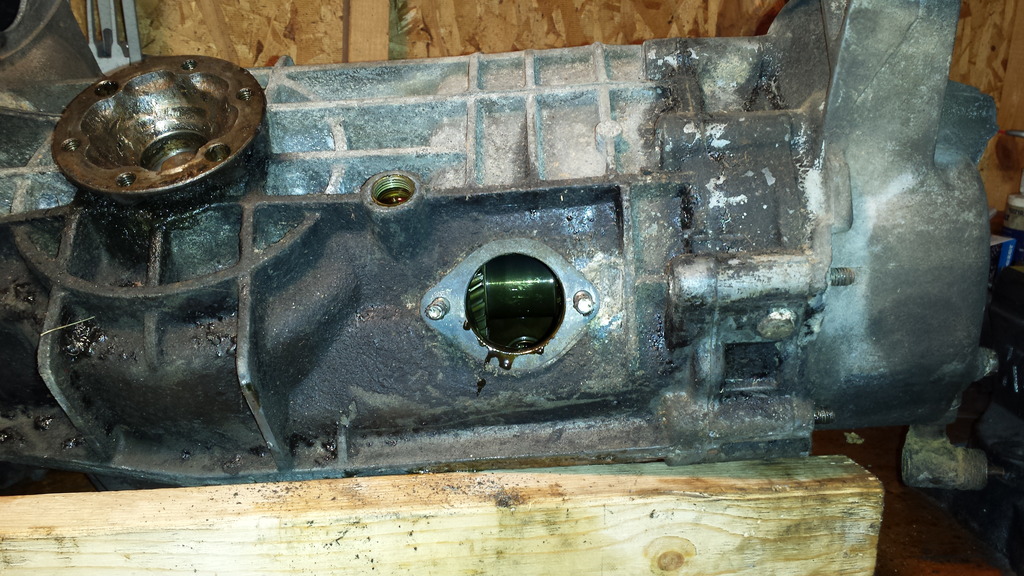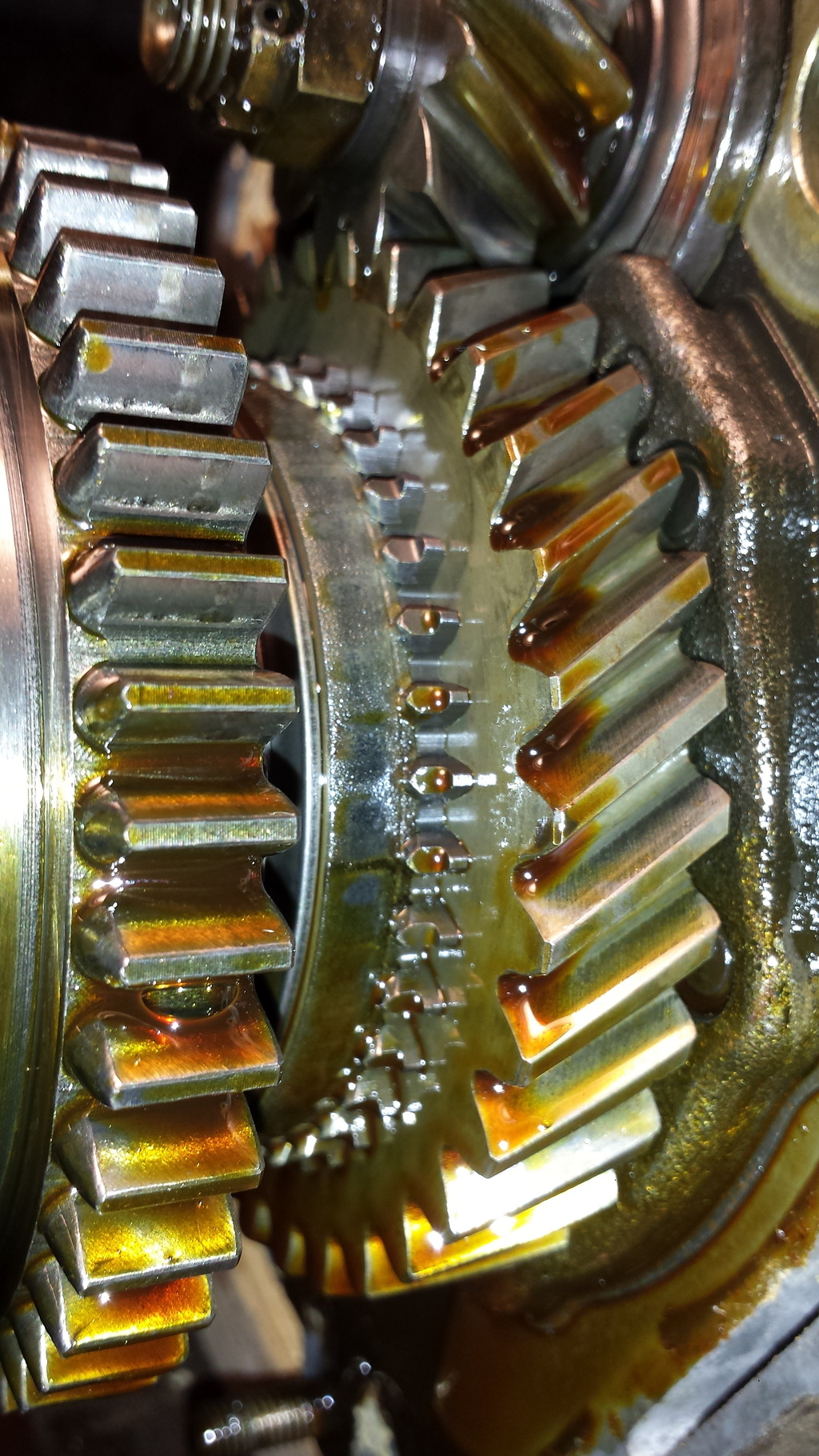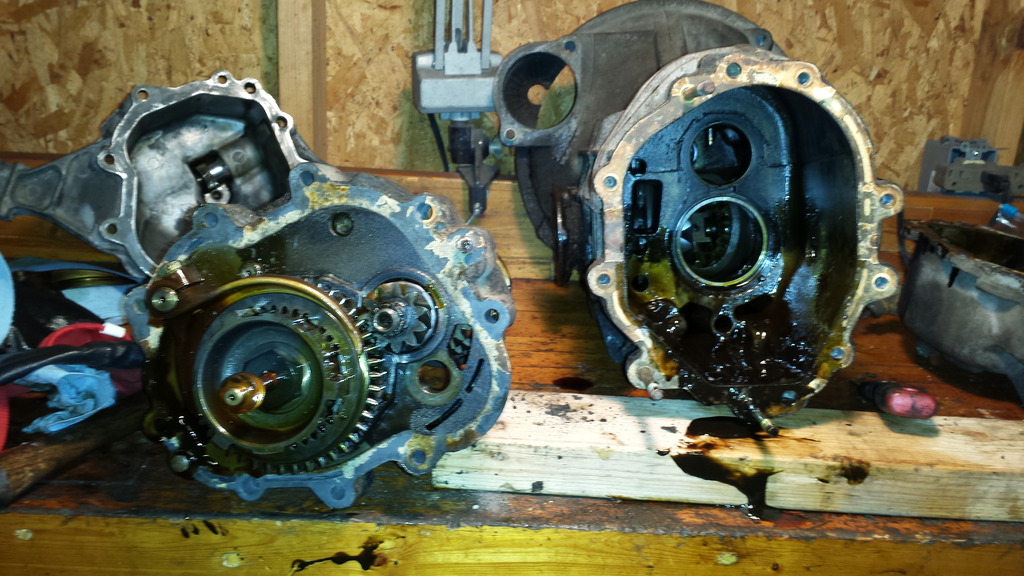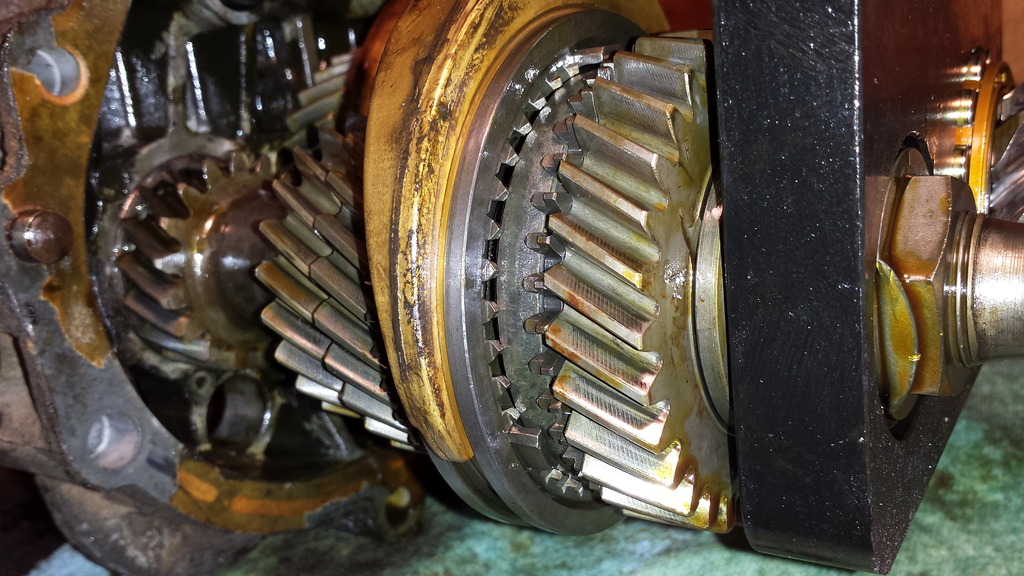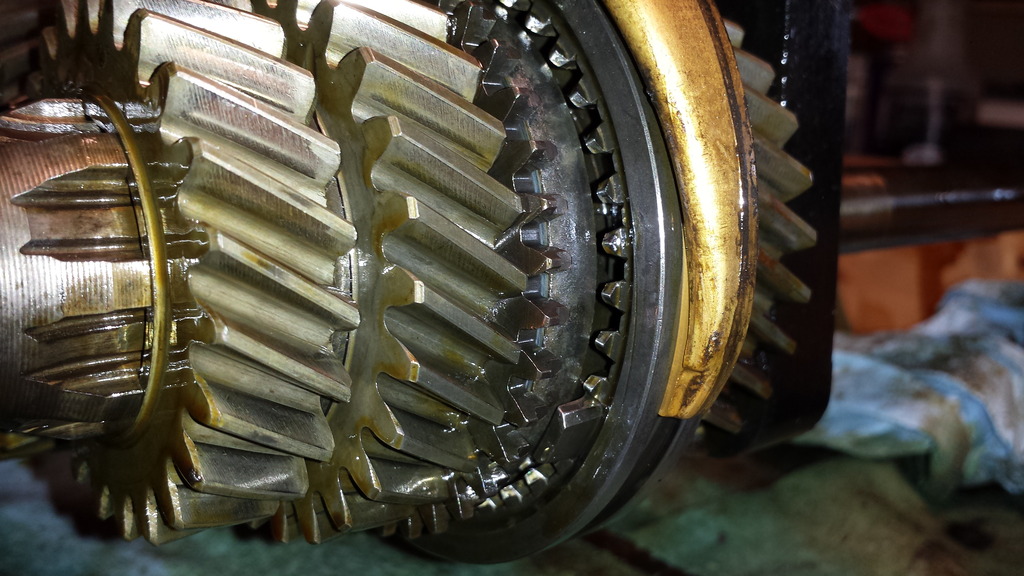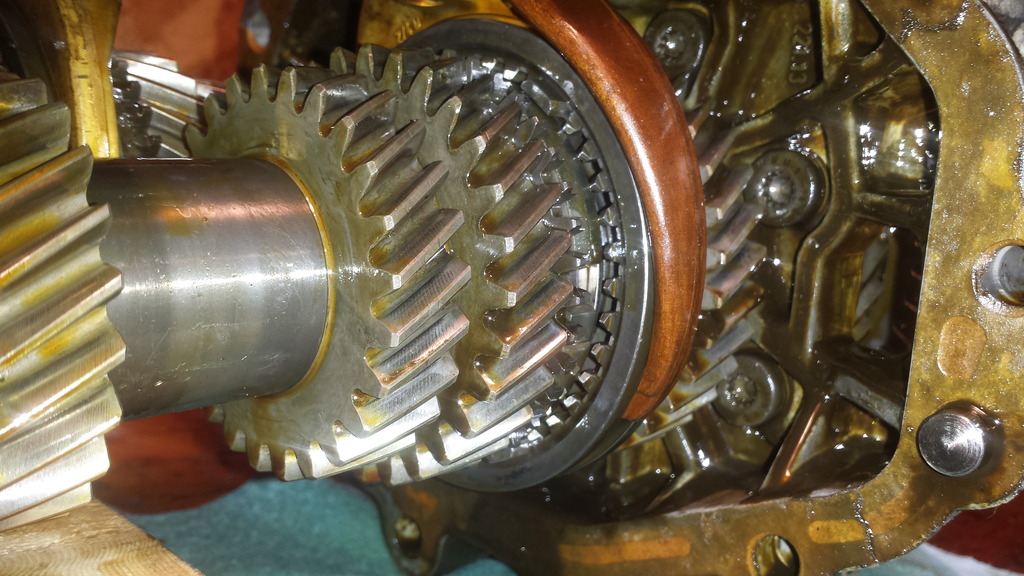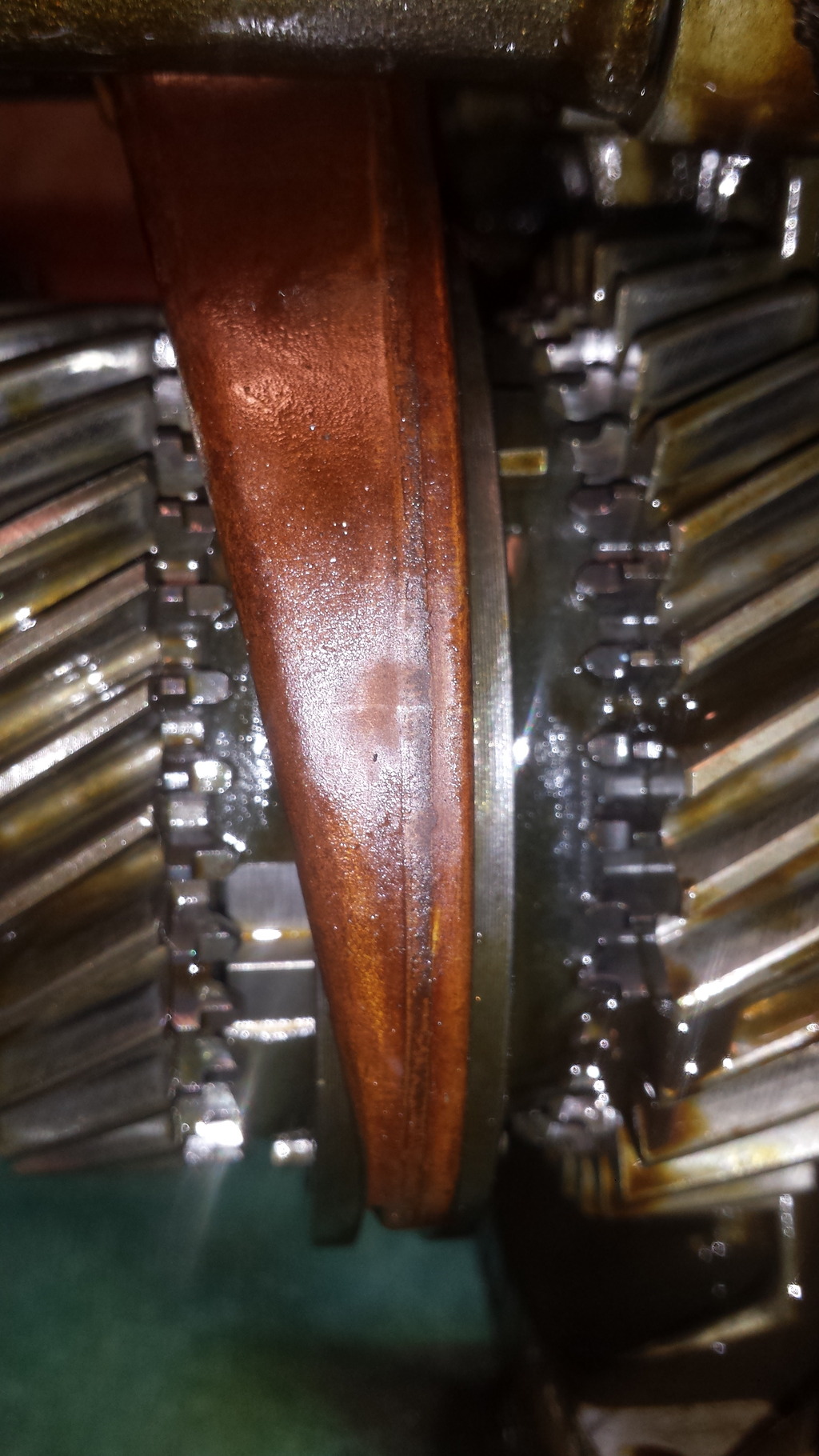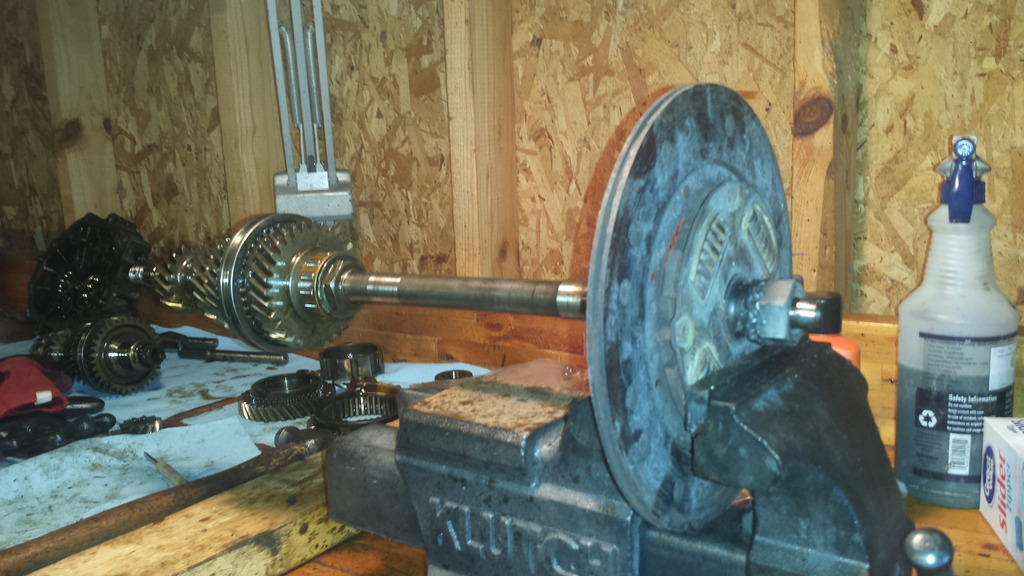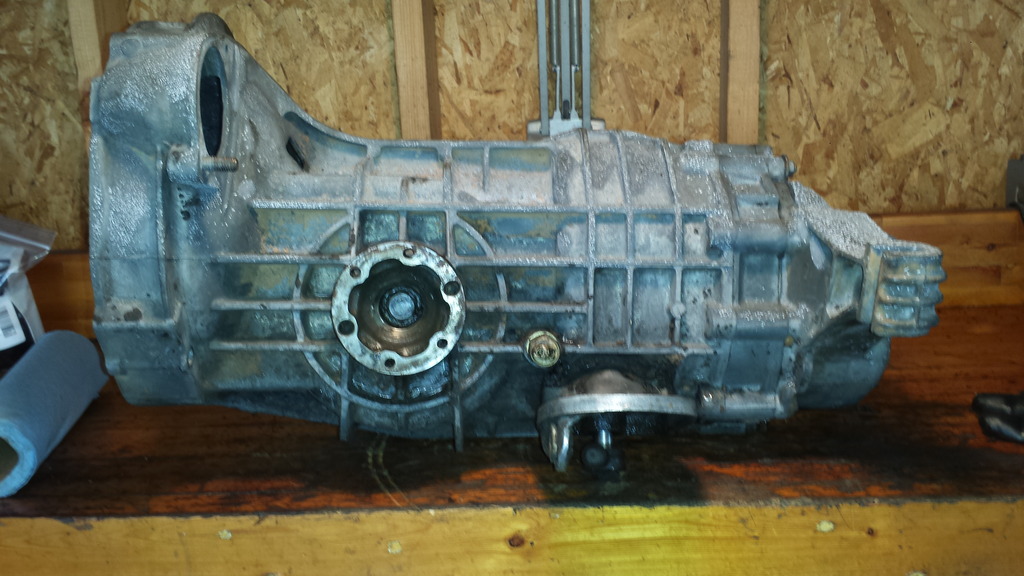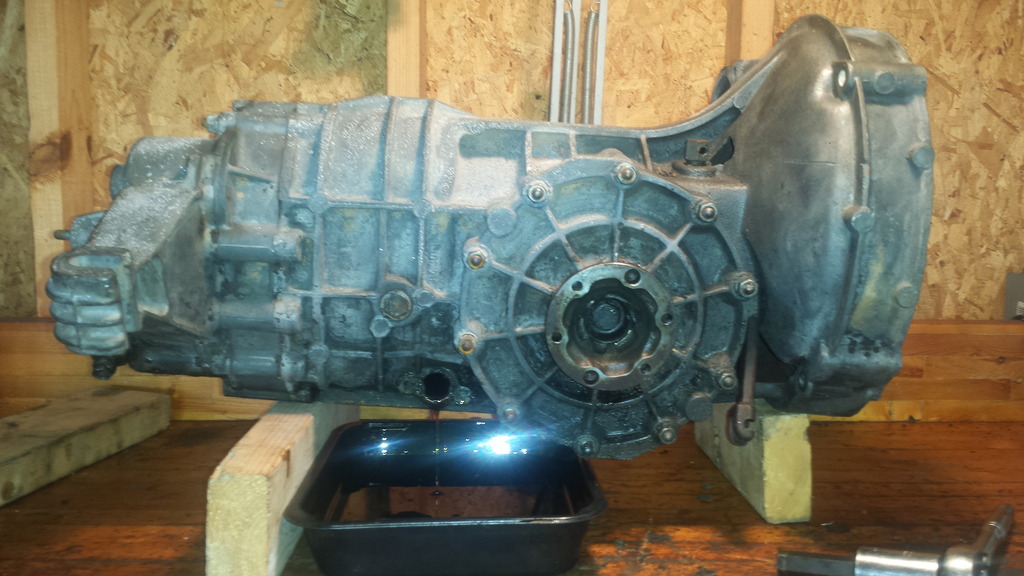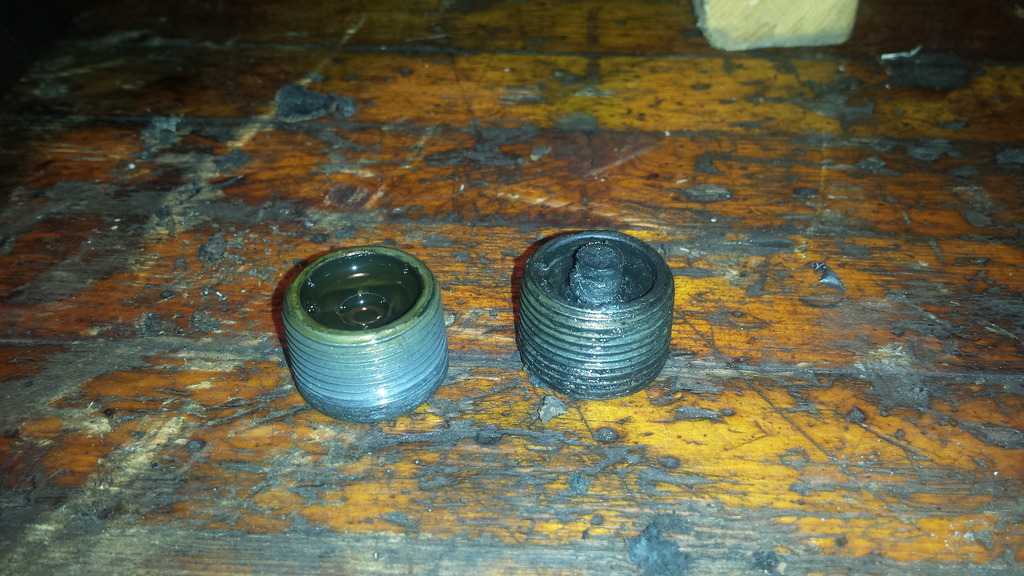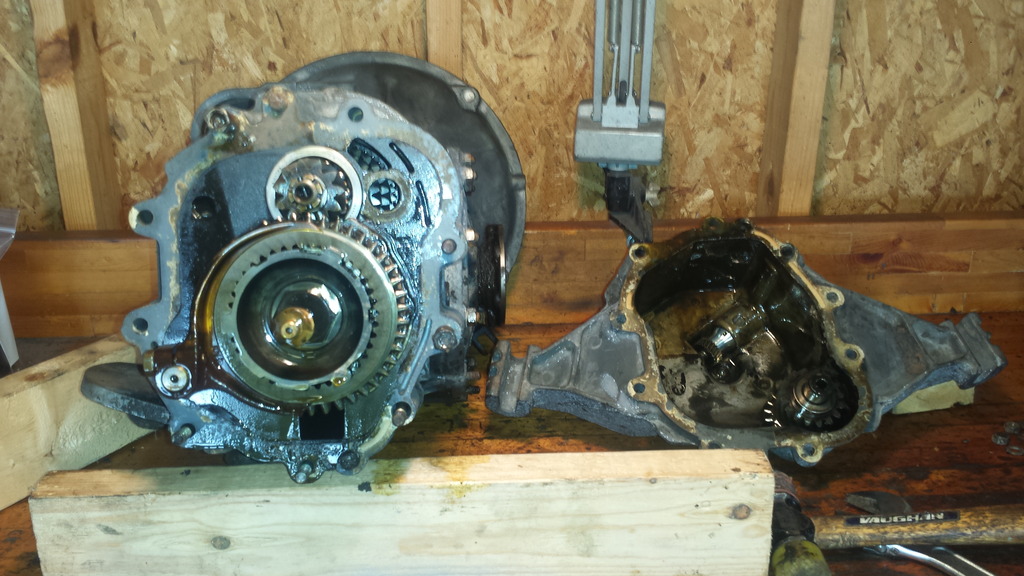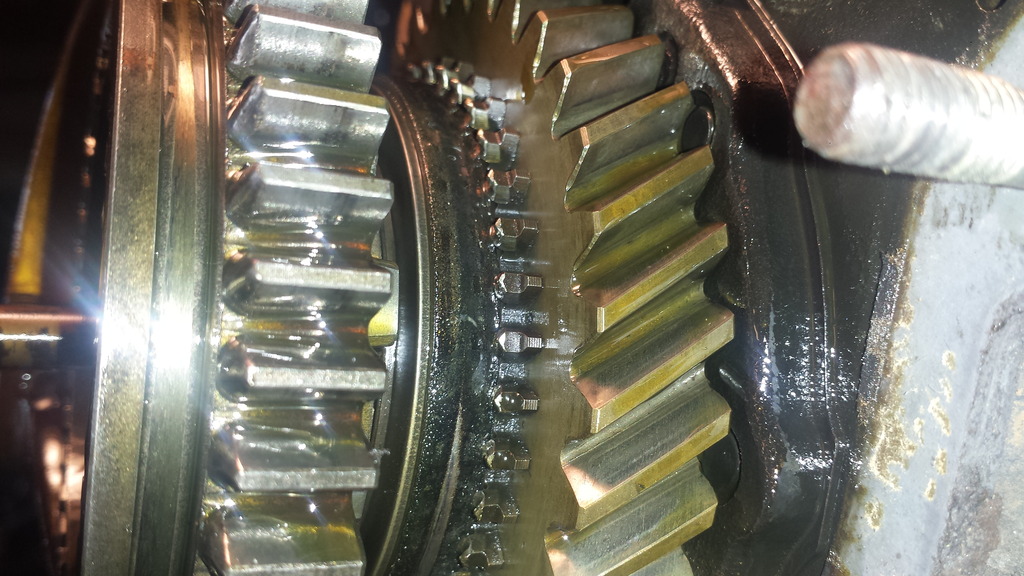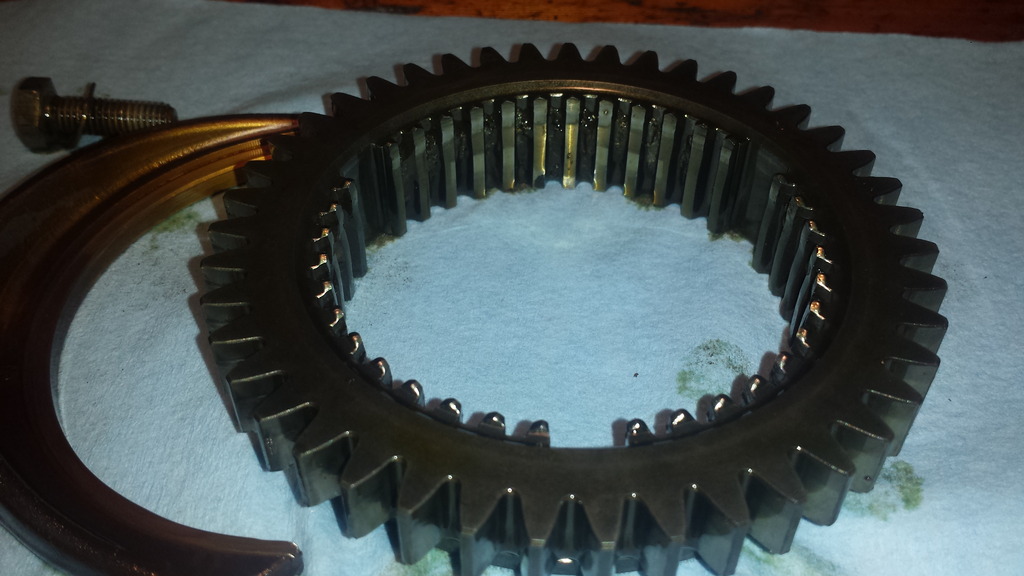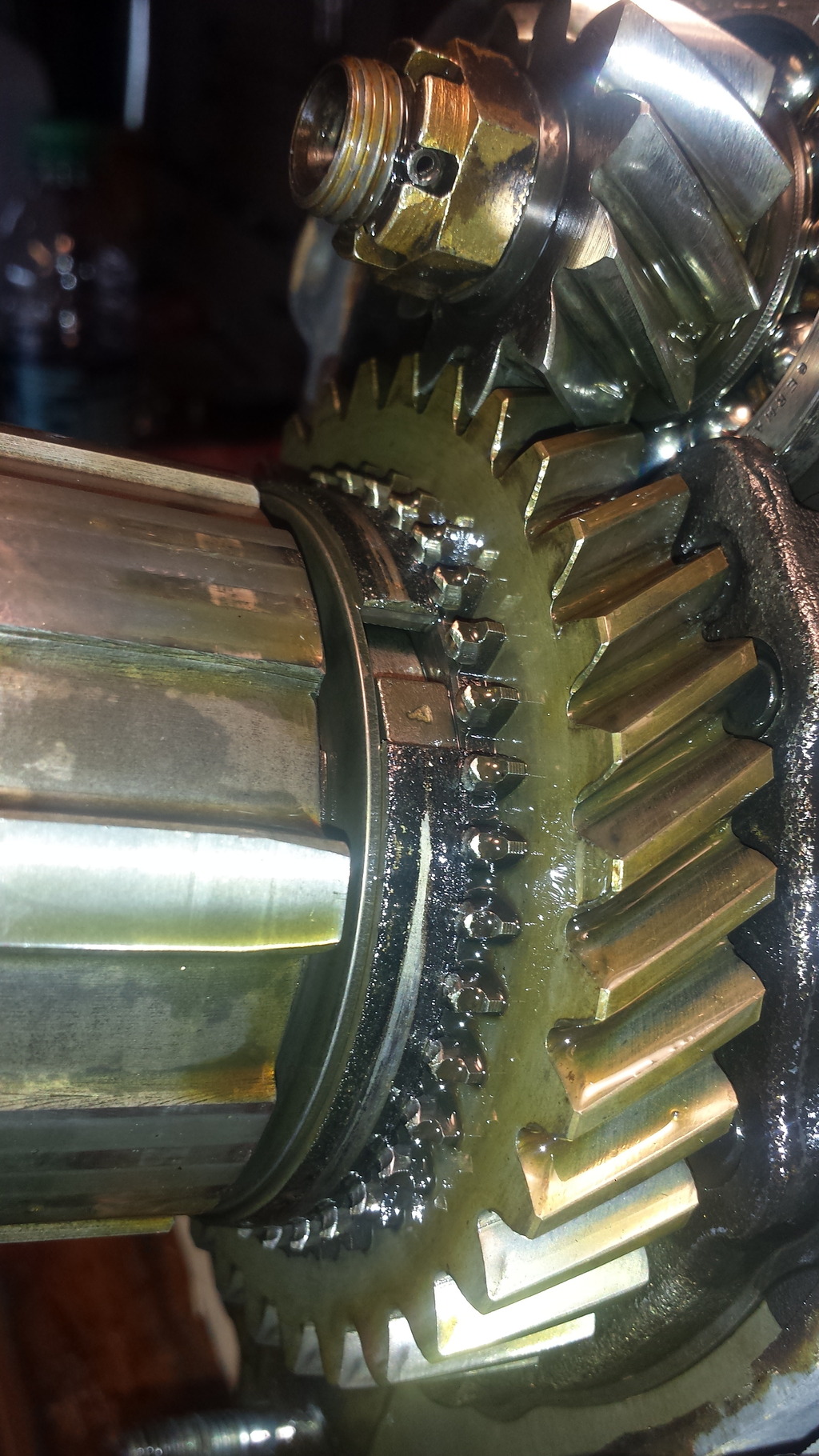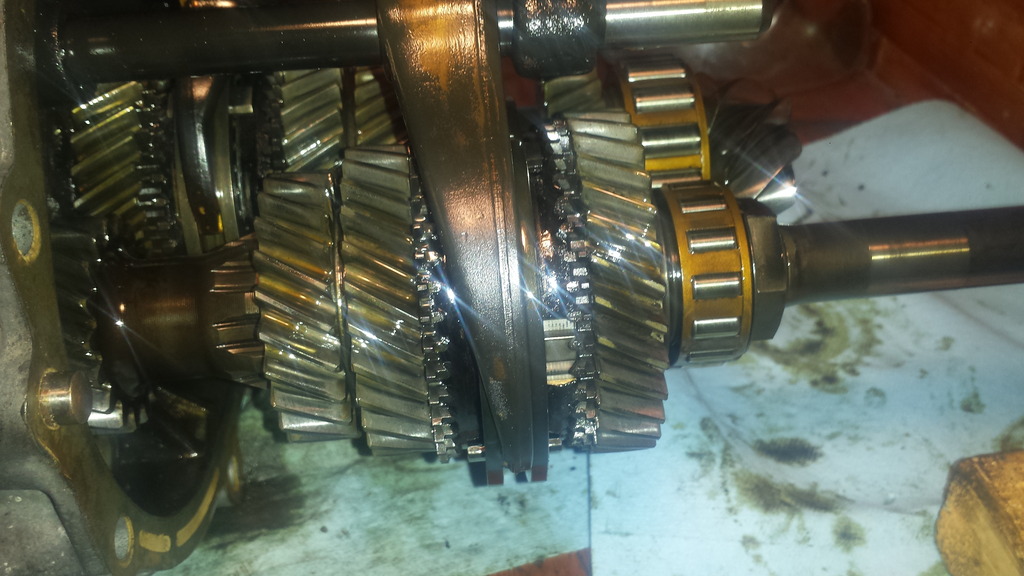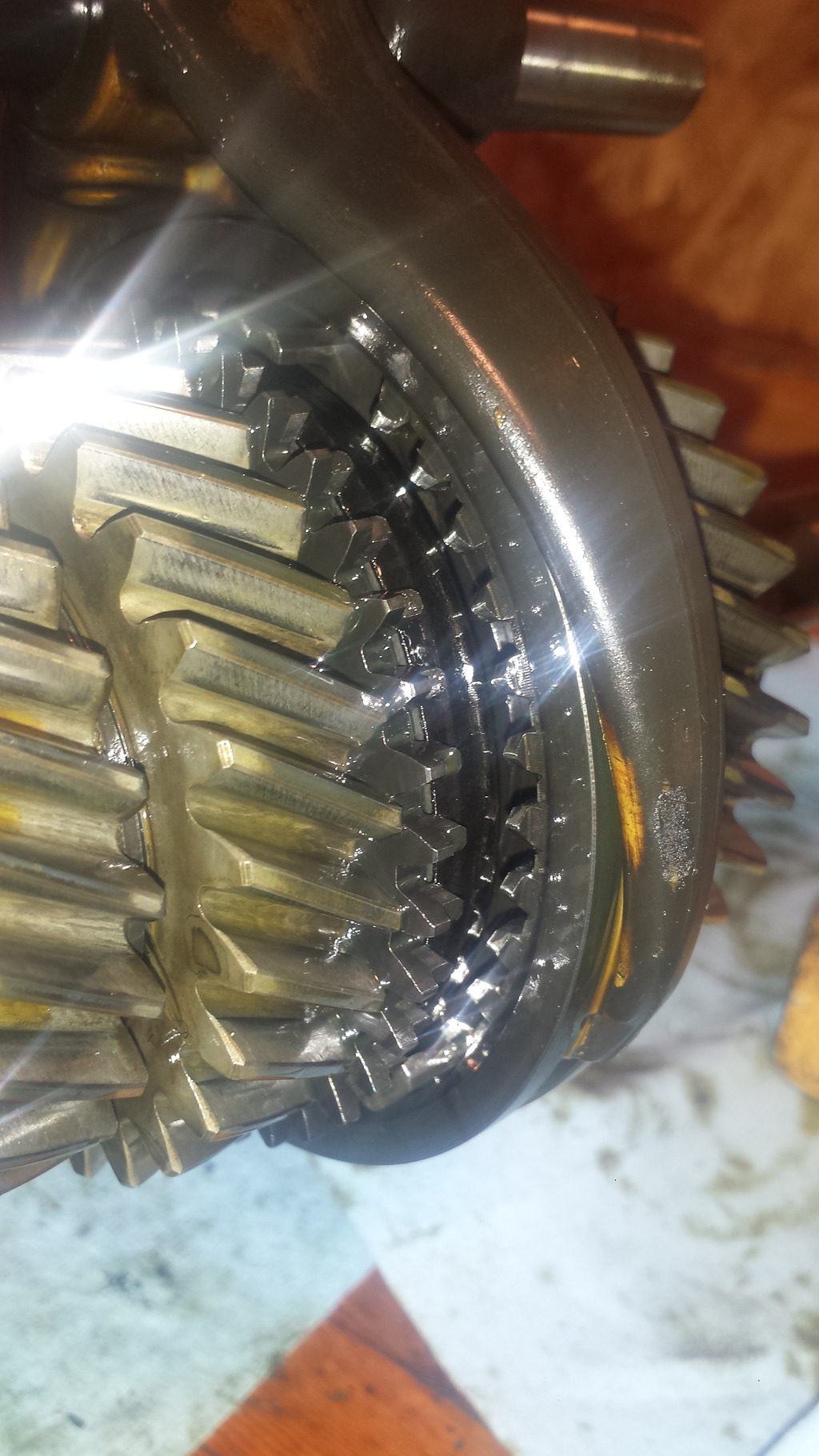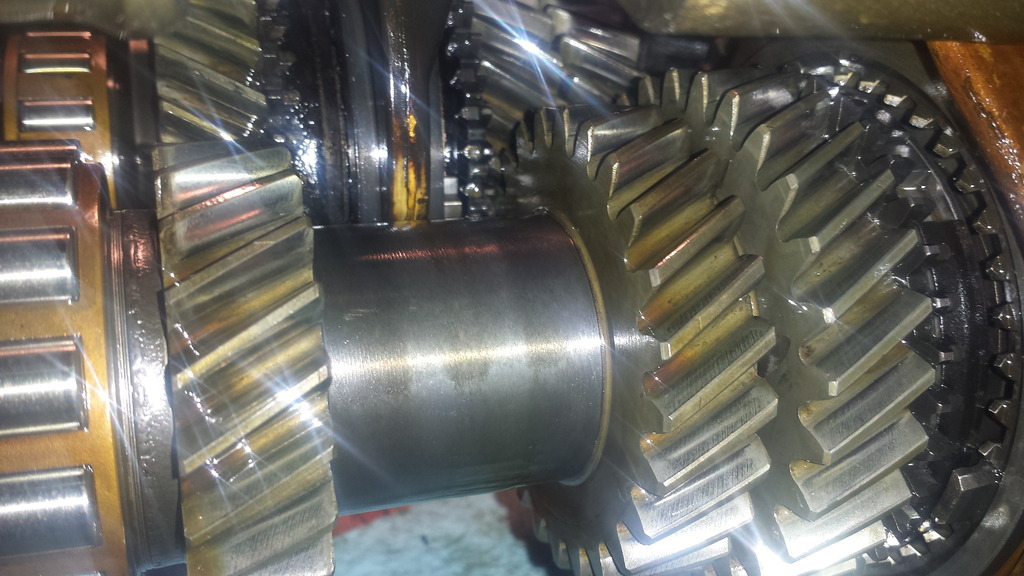Okay. I went in deep today and here's what I found...
Instead of digging deeper into the spare trans that I pulled the cover and 1st gear, I went into another off a '76 parts car, figuring if I monkeyed that up, it wouldn't rally matter. Well surprise, surprise. The dirty trans with a welded rear cover (suspension mount cracked) has what appears to be really fresh syncros, nice sliders and really good dog teeth! I guess when the mount broke, the PO had the trans re-built. Finding that, I'm thinking this is the stack I want to use in the race car. So I pulled the shift rod, wiggled out the intermediate plate and pulled the shift forks with rods. I found out why Red Beard recommends loosening the 30mm nut and castle nut before pulling the intermediate plate (harder to do with the plate out) but I purchased some handy tools a couple days ago from a Porsche shop going out of business - an alignment jig and a spanner with a 1st gear slider welded on it. Once I locked down the stacks, those tools enabled me to get the drive shaft out but the pinion shaft was more difficult. My gear puller wouldn't fit so I had a buddy drive the shaft end out with a large brass punch. Amazingly the bearings remained in good shape. Then to get the other end of the pinion shaft dis-assembled, I used a friction plate with a nut welded to it to hold the input shaft end while I used a large open end wrench on the retaining nut.
So I've got everything loose and lined up in order on the bench and I'm taking a real close look at swopping 3rd and 5th gears when I realize that to do that, yes, you do have to flip the gears (to get the correct orientation) also AND that means reversing the dog teeth. Someone let me know if there's something I'm missing here. So, with the dog teeth, sliders and syncros looking so good on these gears, there's no way I'm going to trash the dog teeth and buy another set.
At this point, I'm just going to re-assemble this stack (OEM gearing) and probably stick it in the spare case and use the spare end cap. OR... I could use this stack in the case that's in the race car right now and not even have to pull the trans out.
